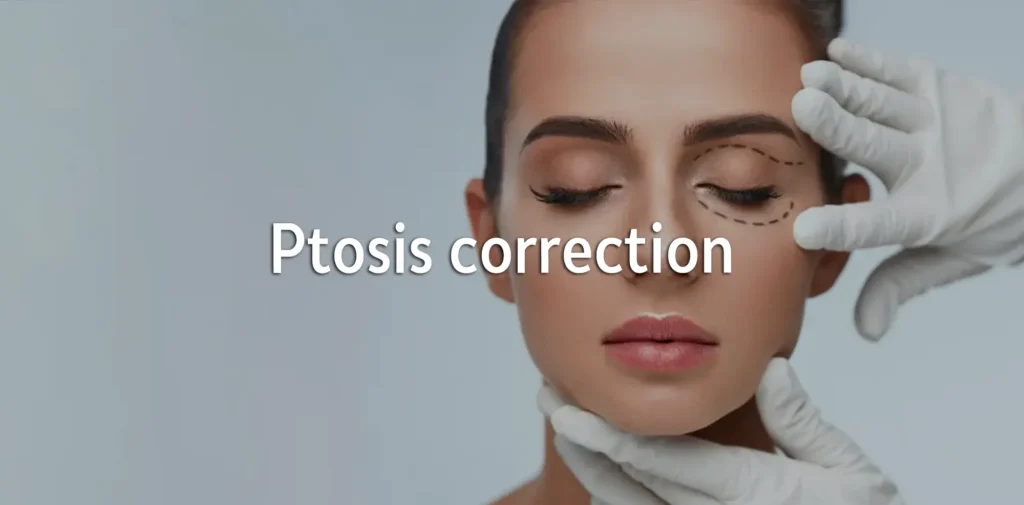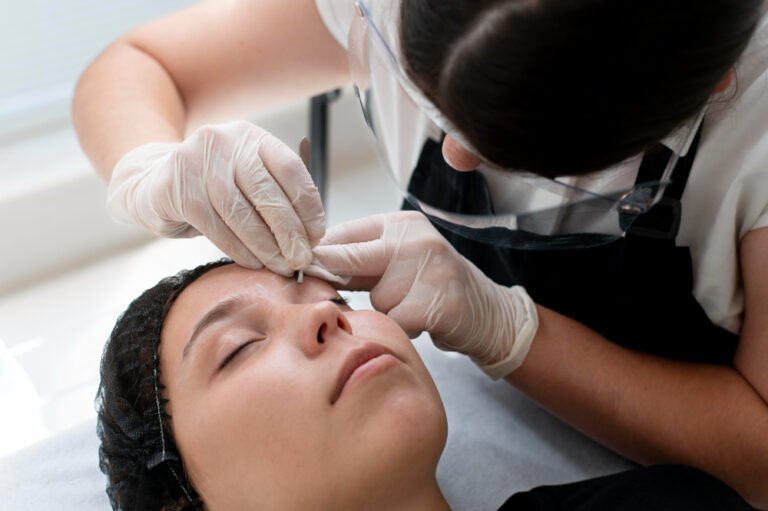If you’ve noticed that one or both of your upper eyelids are starting to droop, you may be wondering: “Can ptosis go away on its own?” The answer depends on the type, cause, and severity of the ptosis. While some mild or temporary cases may improve without intervention, most forms of ptosis require medical evaluation and, in many cases, active treatment.
In this article, we’ll cover the different causes of ptosis, when it might resolve on its own, and when you should seek professional help.
What Is Ptosis?
Ptosis, also known as blepharoptosis, refers to the drooping of the upper eyelid. This condition can affect one eye (unilateral) or both eyes (bilateral) and can range from barely noticeable to completely obstructing the pupil and impairing vision.
Ptosis is typically classified into two categories:
- Congenital ptosis – present at birth
- Acquired ptosis – develops later in life due to various medical or mechanical factors
Can Ptosis Resolve on Its Own?
Whether or not ptosis will go away without treatment depends entirely on its underlying cause. Below are common causes of ptosis and their likelihood of self-resolution:
1. Temporary or Fluctuating Ptosis
✅ May Resolve on Its Own
- Fatigue-related eyelid drooping: Sometimes, eyelids may appear droopy at the end of a long day due to muscle fatigue or eye strain.
- Mild allergic reactions or swelling: Can cause temporary lid drooping that improves as inflammation subsides.
- Medication side effects: Some drugs (like certain muscle relaxants or sedatives) can cause transient ptosis, which may reverse after discontinuation.
- Myasthenia Gravis (early stages): This autoimmune condition causes fluctuating muscle weakness, including the eyelid. Symptoms may vary day-to-day but do not permanently resolve without treatment.
Bottom line: If ptosis is mild and intermittent, it may improve on its own, especially if related to fatigue or temporary conditions. However, an evaluation is still important to rule out underlying neurological issues.
2. Congenital Ptosis
❌ Unlikely to Go Away on Its Own
- Caused by underdevelopment of the levator muscle at birth
- Rarely improves without surgical intervention
- Can cause vision problems, such as amblyopia (lazy eye) or astigmatism, if left untreated
Bottom line: Congenital ptosis usually does not improve over time and typically requires surgical correction, especially if vision is obstructed.
3. Age-Related (Involutional) Ptosis
❌ Will Not Resolve Without Treatment
- The most common form of ptosis in adults
- Caused by weakening or stretching of the levator aponeurosis (the tendon of the eyelid-lifting muscle) due to aging
- Often progressive, worsening over time
Bottom line: Age-related ptosis does not resolve spontaneously. It may worsen and affect both function and appearance unless treated surgically.
4. Neurogenic Ptosis
❌ Needs Medical Treatment
- Caused by nerve damage or neurological disorders, such as:
- Third cranial nerve palsy
- Horner’s syndrome
- Myasthenia gravis
- In rare cases (such as Bell’s palsy), mild nerve-related ptosis may improve, but most require treatment or long-term management
Bottom line: Neurologically induced ptosis usually requires specialist evaluation and therapy. In some cases, surgical correction is needed.
5. Traumatic Ptosis
⚠️ Depends on the Severity
- Caused by physical injury to the eyelid muscles, tendons, or nerves
- Minor trauma may result in temporary swelling or mild drooping that resolves with time
- Severe trauma (e.g., deep cuts or fractures) often results in permanent damage requiring surgery
Bottom line: Mild cases may recover, but moderate to severe traumatic ptosis usually needs surgical correction.
6. Mechanical Ptosis
❌ Will Not Improve Without Treating the Cause
- Caused by physical weight pulling the eyelid down, such as:
- Tumors
- Cysts
- Excess skin (dermatochalasis)
- Resolving the underlying mechanical burden (e.g., removing a growth or redundant skin) is essential
Bottom line: Mechanical ptosis does not go away on its own and requires removal of the cause to restore normal eyelid position.
When Should You See a Doctor?
Even if you suspect that your ptosis might be temporary, it’s important to get a professional evaluation—especially if it:
- Develops suddenly
- Worsens over time
- Affects your vision
- Is accompanied by double vision, headache, or muscle weakness
- Occurs in a child
Prompt medical attention is essential to:
- Rule out serious neurological conditions
- Prevent long-term vision damage, especially in children
- Discuss appropriate treatment options (surgical or nonsurgical)
What Are the Treatment Options If Ptosis Doesn’t Go Away?
If your ptosis persists or worsens, treatment options may include:
Non-Surgical Options:
- Prescription eye drops (e.g., oxymetazoline/Upneeq) for mild cases
- Treatment of underlying causes (e.g., managing myasthenia gravis or diabetes)
- Observation, especially in stable, non-vision-threatening cases
Surgical Options:
- Levator muscle repair or advancement
- Frontalis sling surgery (for congenital or severe muscle weakness)
- Blepharoplasty (removal of excess skin if dermatochalasis contributes to ptosis)
Conclusion
While some mild or temporary cases of ptosis may go away on their own, the majority—especially those caused by congenital defects, age-related changes, trauma, or neurological disorders—do not resolve without treatment. In fact, untreated ptosis can lead to worsening vision, eye strain, and long-term eye health issues.




